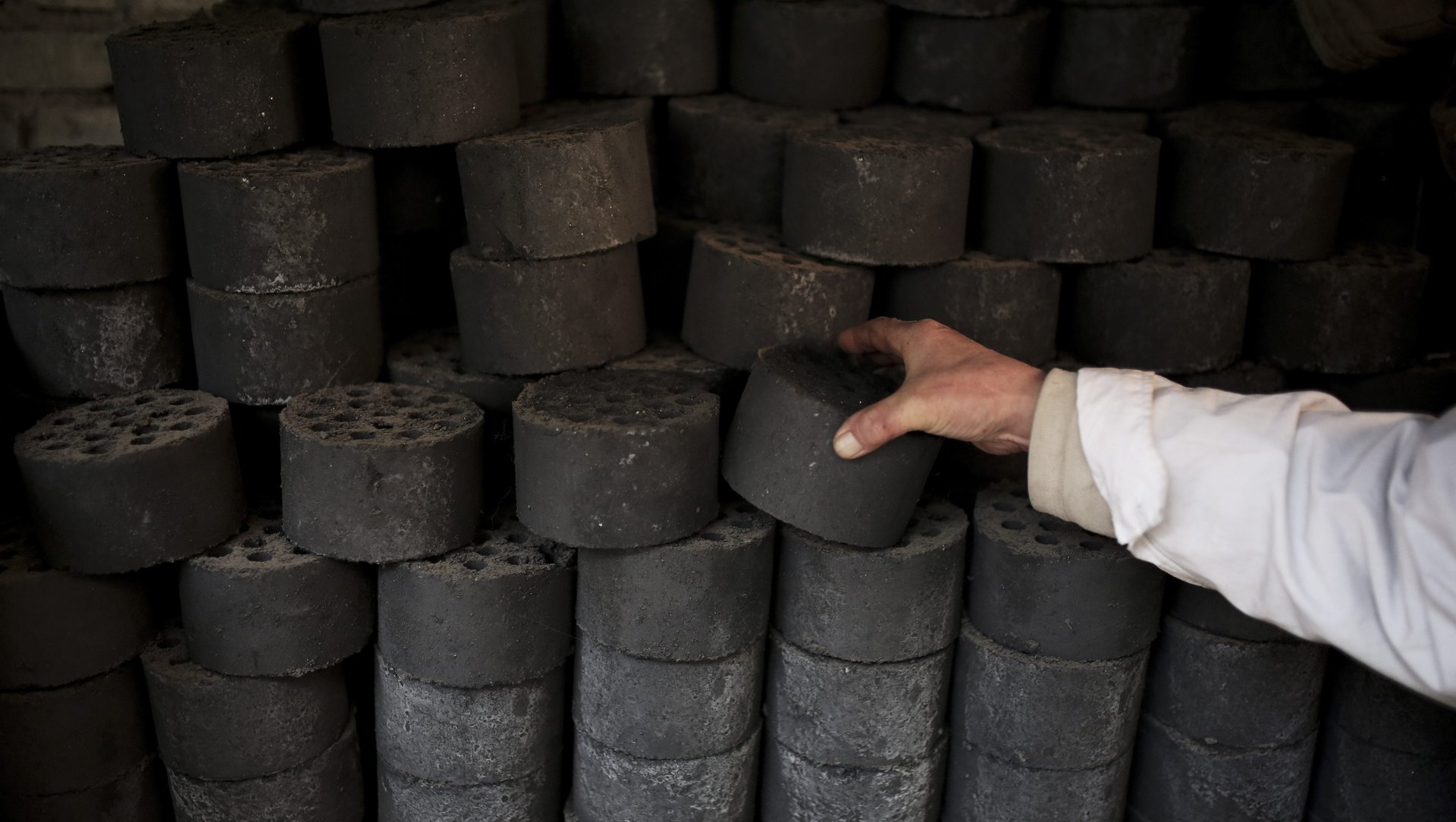China’s putting the brakes on coal for heating millions of homes this winter
China might start to see better air this winter as it prepares to heat millions of houses for the first time by gas, and continues a clampdown on coal to battle its deadly pollution.


China might start to see better air this winter as it prepares to heat millions of houses for the first time by gas, and continues a clampdown on coal to battle its deadly pollution.
Some 4 million homes are expected to start using gas this winter, according to a Reuters report.
On Monday (Oct. 2), Taiyuan, capital of China’s coal hub Shanxi province, said it would ban the sale, transport, and burning of coal by individuals and companies. The ban could cut the use of coal by 2 million metric tons (2.2 million tons), or about 90% of the total consumption of the city of more than 3 million. Instead, the city will heat some 134,000 households with renewable energy or natural gas this winter.
A similar change will take place in many households in a slew of northern Chinese cities covered under China’s Huai River policy, which since the 1950s has provided subsidized coal for indoor heating to homes north of the Huai River, where temperatures fall far below freezing. The country burns around 300 million metric tons (link in Chinese) (330 million tons) of coal for heating every year, Bai Rongchun, a former official with China’s National Energy Administration (NEA), said this year. That’s around 7% (link in Chinese) of annual coal consumption, according to China’s National Bureau of Statistics.
The massive coal use has been one of the major culprits for China’s “airpocalypse“-like air pollution in winter. Coal is the dirtiest of fossil fuels, producing the least energy and the most pollution (such as particular matter) per kilogram. In September, researchers found that the winter heating policy had cut people’s lifespans by more than three years due to cardiorespiratory disease such as lung cancer, compared with residents of southern cities.
In March, China’s ministry of environment selected Beijing, Tianjin and cities in Hebei province—some of the country’s most polluted—to begin switching to cleaner heating. The ministry required 50,000 to 100,000 households (link in Chinese) in 28 cities to replace coal heating systems by the end of October. Yesterday (Oct. 3), the NEA and China’s development and reform commission said the country wanted to use more geothermal energy so as to bring the share of coal in its energy mix to under 58% by 2020, down from the current 62%.
China also began halving steel production in major steel-producing hubs and asked producers to reduce by one-third (paywall) their coking coal production.
It remains to be seen whether the energy swap will actually work. In 2013, more than 44,000 households (link in Chinese) in downtown Beijing switched to gas and electricity. But the city still experiences severe air pollution in late December and early January that chokes the city’s 21 million residents.
Some have voiced concerns about how the coal restrictions will affect China’s northeastern industrial areas during peak demand times. In August, two mines in Inner Mongolia operated by China’s Shenhua Energy, the country’s largest state-owned coal mining firm, suspended operations. Huadian Energy, which sources coal for winter heating from Shenhua, said (link in Chinese) the production cut would affect the winter heating and safety. The energy company provides winter heating to households and factories in an area covering more than 100 square kilometers (nearly 40 square miles).